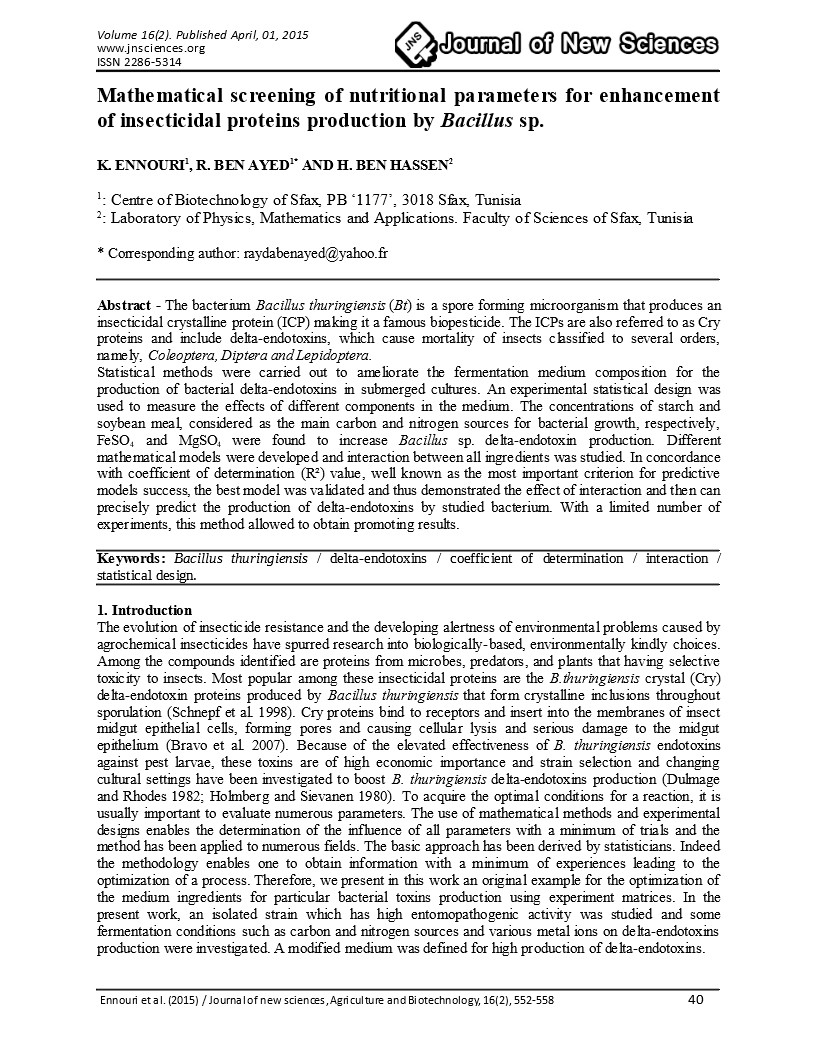- Category: Volume 16
- Hits: 9535
Chemical, Functional and Nutritional Characteristics of raw, autoclaved and germinated fenugreek seeds

S. MABROUKI
B. OMRI
H. ABDOULI *
Laboratory of Improvement & Integrated Development of Animal Productivity & Food Resources, Higher School of Agriculture of Mateur, University of Carthage, Tunisia.
Abstract - To evaluate fenugreek seeds potential as nutritional and functional feed, chemical compositions, functional properties and in vitro nutritional values of raw, autoclaved (121°C, 15min) and pre-germinated (emergence of the radical in 95% of the seeds) fenugreek seeds were compared. On dry matter basis, raw seeds had: 5.4, 23.8, 40.4, 16.8, 66.9 and 26.4% fat, crude protein, NDF, ADF, total carbohydrates and non-fibrous carbohydrates, respectively. Autoclaving increased (P<0.05) fat (8.5%) and ADF (17.6%) and reduced (P<0.05) carbohydrates (64.3%) and non-fibrous carbohydrates (19.2%). Pre-germinated increased (P<0.05) fat (7.7%), crude protein (24.1%) and ADF (17.3%) and reduced (P<0.05) carbohydrates (64.2%). Raw seeds total phenols, tannins, flavonoids and phytic acid contents were 7.1, 3.5, 2.6 and 6.6 mg /g dry matter, respectively. Autoclaving reduced (P<0.05) only flavonoids level and pre-germinated reduced (P<0.05) phenols, tannins and flavonoids levels. Among the distinctive functional properties of raw seeds were their bulk density (0.69 g DM/ml), water absorption capacity (4.72 g/g DM), foaming capacity (21.37%), swelling coefficient (305%) and extractable color value (8.3 ASTA units). Autoclaving decreased (P<0.05) bulk density by 13% and extractable color by 29%. Pre-germination reduced (P<0.05) water absorption capacity by 17.8% and extractable color by 73.3 to 74.2% and increased (P<0.05) foaming capacity by 37.1%. Autoclaving reduced (P<0.05) protein dispersibility index from 34.78 to 10.25%, had no effect (P>0.05) on digestibility by pepsin (74.12-75.84%) and increased (P<0.05) digestibility by pepsin-trypsin from 82.31 to 85.91%, digestible energy by 6.2% and metabolizable energy by 4 to 4.7%. Pre-germination enhanced (P<0.05) protein dispersibility index to 45.39% and digestible energy by 3.8% and metabolizable energy by 4.3 to 6.7%. It was concluded that fenugreek seeds can serve as a valuable nutritional and functional food. Autoclaving and pre-germination improved such potential and need to be further evaluated and implemented in In Vivo studies.
Keywords: Fenugreek seeds / autoclaving / pre-germination / functional properties / nutritional values.




